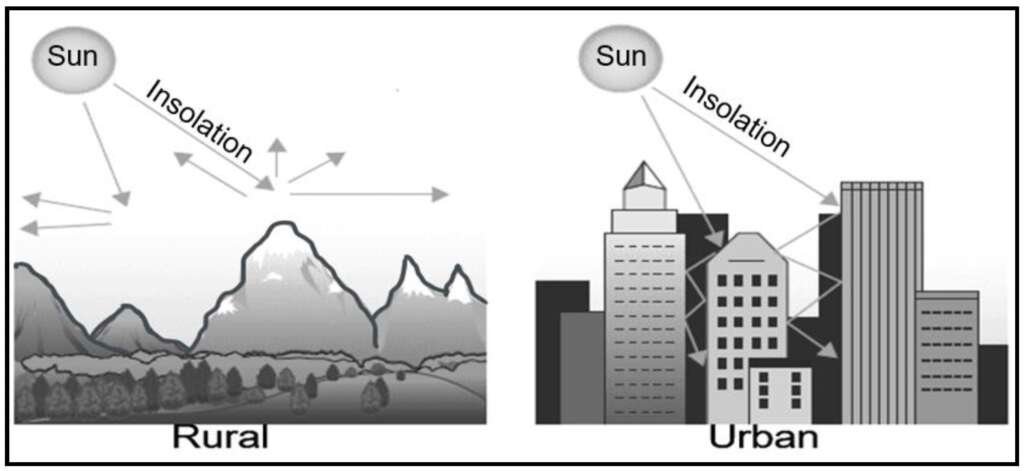Geography Grade 12: the difference between rural and urban climates The climates of rural and urban areas can differ due to various factors, including human activities, land use patterns, and the physical characteristics of the environment.
Questions – Geography Grade 12: the difference between rural and urban climates

The climatic element illustrated in the sketch is (wind/temperature)Answer: Temperature
Here are some key differences between rural and urban climates:
- Temperature: Urban areas often experience higher temperatures than rural areas, a phenomenon known as the urban heat island effect. This is primarily because of the prevalence of concrete and asphalt surfaces in cities, which absorb and retain heat more than natural surfaces.
- Wind Patterns: Rural areas tend to have more open spaces and fewer obstructions, allowing for freer movement of air. Urban areas, with their tall buildings and compact structures, can disrupt natural wind patterns, leading to lower wind speeds and altered air circulation.
- Humidity: Urban areas may have lower humidity levels compared to rural areas. This is due in part to increased heat and the presence of impervious surfaces in cities, which reduce evaporation and contribute to drier conditions.
- Precipitation: Urbanization can affect precipitation patterns. Some studies suggest that cities may experience increased rainfall because of the heat generated by human activities. However, local factors such as topography and geographic location also play a significant role in precipitation patterns.
- Air Quality: Urban areas often face air quality issues due to pollution from vehicles, industrial activities, and other sources. Rural areas generally have better air quality, although agricultural activities can contribute to specific air quality challenges in those regions.
- Microclimates: Within both rural and urban areas, there can be microclimates—small-scale variations in climate conditions. Urban areas, with their diverse surfaces and structures, may have more pronounced microclimates, leading to variations in temperature, humidity, and wind patterns over short distances.
- Vegetation: Rural areas typically have more natural vegetation, which can influence local climates by providing shade, releasing moisture through transpiration, and affecting wind patterns. In contrast, urban areas may have limited green spaces, impacting the local microclimate.
- Noise and Light Pollution: While not strictly climate-related, noise and light pollution are more prevalent in urban areas and can influence the overall environmental conditions experienced by residents.
Explain how the different shapes and density of buildings (in the sketch) contribute to the city having higher temperatures
Answer:
- Tall buildings cause the sun’s rays to be reflected and deflected between the buildings
- Large surface areas of buildings absorb more of the sun’s rays
- Density of buildings ensures that the heat remains closer to the earth’s surface
In a paragraph of approximately EIGHT lines, explain how urban planners could put strategies in place regarding the shapes and density of buildings in order to reduce the higher temperatures
Answer:
- Paint buildings in lighter colours e.g. white to increase reflection of heat
- Planting gardens on roof tops will cool temperatures
- Buildings should be eco-friendly (green)
- Future land use planning (buildings) should coincide with prevailing wind directions to cool cities
- Decentralise commercial activities to reduce building density
- Decrease building height to reduce heat trapped by buildings
- Decrease building density to reduce heat near surface
- Filters in chimneys of buildings to reduce air pollution
Conclusion
It’s important to note that these generalizations may not apply universally, as local geographic and climatic conditions vary widely. Additionally, ongoing urbanization and changes in land use can further modify the climate of both rural and urban areas.